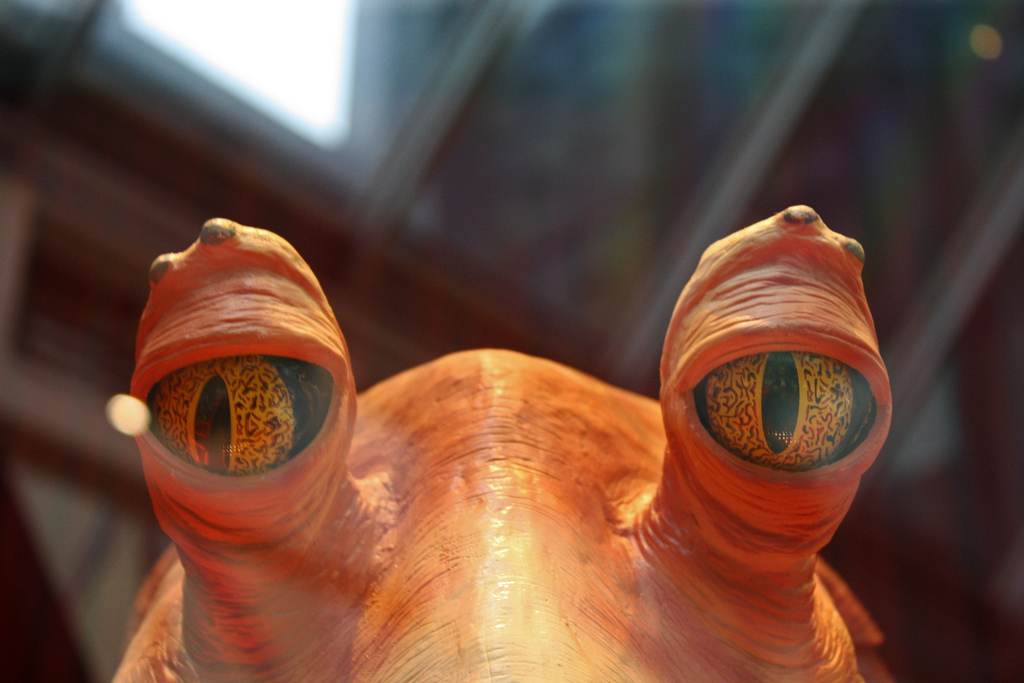We have now marked 40 years since the first Star Wars, “A New Hope” astounded moviegoers with its otherworldly look and stunning special effects. Since then, special effects have morphed into CGI and the growing pains of this change and subsequent balancing act between analogue and digital mark the three distinct “Star Wars” trilogies. As the triumph of “The Force Awakens” subsides and excitement mounts in anticipation of “The Last Jedi,” we take a look at how technical innovations shaped the look and sound of some of the most beloved (and reviled) “Star Wars” moments.
A long time ago … There were SFX.
https://youtu.be/vP_1T4ilm8M
In order to make his first Star Wars movie approximate his elaborate storyboards, George Lucas hired special effects wizard John Dykstra to head up a new company — Industrial Light and Magic (ILM). Lucas’ ideas required Dykstra and his team to invent as they went along, as this quote from Dykstra in a The New Economy article demonstrates: “Back in the days of ‘Star Wars,’ we kind of walked into an empty warehouse and sat on the floor and went ‘How are we going to do this?’”
ILM has since been responsible for some of the biggest special and digital effects of the past 40 years, including the incredible leaps from SFX to VFX.
“But,” continues The New Economy, “a mere two decades after Dykstra destroyed the Death Star in ‘A New Hope’ using nothing but a cardboard box and titanium shavings, Lucas turned his back on animatronics and practical effects in favour of expanding his ‘Star Wars’ universe digitally in the prequel episodes…”
The literally unbelievable.

Indeed, the prequel trilogy pushed the limits of CGI, creating incredible virtual sets, and “the first CG star” in the form of Jar Jar Binks. But the technology was not quite there yet, which brought a little too much attention to the fact that the actors inhabited a post-production world. “Worse,” as this Wired article points out, “the special effect that was meant to be ‘The Phantom Menace’s’ crowning glory instead ended up as the biggest albatross around its neck.” Wired concludes that Jar Jar Binks “became instead emblematic of the film’s flawed CG heart.”
Sounds of a galaxy far, far away.
https://youtu.be/TV6sjwqCQ2M
The famed sound designer Ben Burtt was a student at USC when he began collecting sounds of the real world destined to be manipulated into the iconic sounds of the original “Star Wars” trilogy. In an article detailing the sounds behind those sounds, Burtt is quoted as saying, “In my first discussion with George Lucas about the film, he [said] — and I concurred with him — that he wanted an ‘organic,’ as opposed to the electronic and artificial soundtrack. … Therefore we wanted to draw upon raw material from the real world: real motors, real squeaky door, real insects; this sort of thing.” An example is the use of his TV set blended with an old 35 mm projector to create the hum of a light saber.
The sound designers for “The Force Awakens” continued in Burtt’s footsteps. In a Daily Dot interview, David Acord tells how he turned his cat’s purring into Kylo Ren’s Force rumble: “It’s pitched and kind of slowed down, and it’s got a ton of low-end added to it. But you listen to it, it’s one of those things … it’s tough when you sort of pull back the curtain for sound effects, because then that’s all you’ll hear, is that. [laughs] But yeah, that’s Pork Chop purring.” Perhaps it is this seamless melding of analogue and digital that most beautifully captures the spirit of “Star Wars.”
A new movement.
The development of motion capture — the use of the physicality of actors to animate CG creations — melds together the real and virtual worlds to great and seamless effect. Although, in an effort to reclaim some of the original trilogy’s magic, “The Force Awakens” director JJ Abrams famously eschewed much of the CGI available to him, Lupita Nyong’o enlivens her CGI character with motion capture as space pirate Maz Kanata.
Supreme Leader Snokes, another CGI character played by Andy Circus of Gollum fame, will be physicalized as a giant puppet in “The Last Jedi,” according to Making Star Wars, assuring fans that the union of real and virtual wizardry continues.
What is your favorite “Star Wars” sound effect? Let us know in the comments below. And learn more about Filmmaking and 3D Animation & VFX at New York Film Academy.

